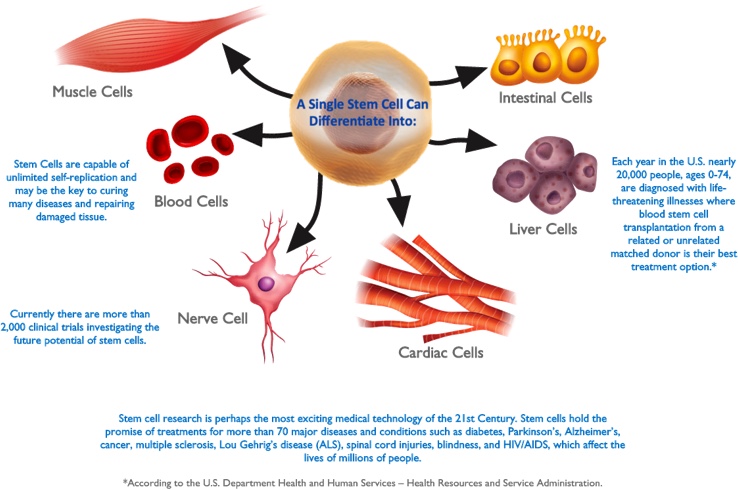Table of Contents

[/image][=video]
[/video]
A lot of sites used for bone marrow harvesting are located in the hip bones and the breast bone. In healing, the benefactor may experience some discomfort in the areas where the needle was put.

If an autologous transplant is intended, formerly collected stem cells, from either outer (apheresis) or harvest, are counted, screened, and ready to infuse. The prep work for a bone marrow transplant vary depending upon the sort of transplant, the condition requiring transplant, and your resistance for sure medications. Take into consideration the following: The majority of often, high doses of radiation treatment and/or radiation are consisted of in the prep work.
Ablative therapy avoids this procedure of cell manufacturing and the marrow ends up being empty. An empty marrow is needed to make space for the new stem cells to grow and establish a brand-new blood cell production system.
It is not a surgical treatment to put the marrow right into the bone, however resembles getting a blood transfusion. The stem cells find their means into the bone marrow and start recreating and expanding brand-new, healthy blood cells. After the transplant, helpful treatment is provided to stop and treat infections, adverse effects of therapies, and difficulties.
Medical Group local to Rochester Hills
The days prior to transplant are counted as minus days. The day of transplant is considered day absolutely no. Engraftment and recuperation complying with the transplant are counted as plus days.
The days are numbered to aid the patient and family recognize where they are in regards to risks and discharge preparation. During mixture of bone marrow, the patient may experience the following: Pain Chills Fever Hives Breast discomfort After infusion, the patient might: Invest numerous weeks in the health center Be really susceptible to infection Experience extreme bleeding Need blood transfusions Be confined to a tidy setting Take multiple anti-biotics and various other medicines Be offered medicine to stop graft-versus-host diseaseif the transplant was allogeneic.
Relying on the kind of transplant and the illness being treated, engraftment generally happens around day +15 or +30. Blood matters will be inspected often throughout the days following transplant to review initiation and development of engraftment. Platelets are generally the last blood cell to recover. Engraftment can be delayed as a result of infection, medications, reduced contributed stem cell matter, or graft failure.
Bacterial infections are the most usual. Viral and fungal infections can be lethal. Any infection can trigger an extended medical facility keep, avoid or postpone engraftment, and/or reason long-term body organ damage. Antibiotics, antifungal medicines, and antiviral medicines are commonly provided to attempt to stop serious infection in the immunosuppressed person. Thrombocytopenia (reduced platelets) and anemia (reduced red cell), as an outcome of a nonfunctioning bone marrow, can be harmful and even life-threatening.
Pain associated to mouth sores and gastrointestinal (GI) irritability prevails. High doses of radiation treatment and radiation can create extreme mucositis (inflammation of the mouth and GI tract). Liquid overload is a problem that can result in pneumonia, liver damages, and high blood stress. The main reason for fluid overload is since the kidneys can not stay up to date with the huge amount of liquid being provided in the type of intravenous (IV) medicines, nutrition, and blood items.
Medical Group around Rochester Hills

Respiratory system standing is an essential feature that may be jeopardized throughout transplant. Infection, swelling of the respiratory tract, liquid overload, graft-versus-host illness, and bleeding are all possible lethal problems that might take place in the lungs and lung system. The liver and heart are necessary organs that might be damaged throughout the transplantation procedure.
Failure of the graft (transplant) holding in the marrow is a possible difficulty. Graft failing may occur as a result of infection, persistent illness, or if the stem cell count of the given away marrow was not enough to create engraftment. Graft-versus-host condition (GVHD) can be a serious and serious issue of a bone marrow transplant.
Instead of an organ transplant where the person's body immune system will certainly try to reject just the transplanted body organ, in GVHD the brand-new or hair transplanted immune system can strike the entire patient and all of his or her organs. This is due to the fact that the brand-new cells do not acknowledge the cells and body organs of the recipient's body as self.

The most common sites for GVHD are GI tract, liver, skin, and lungs. Prognosis greatly depends upon the following: Sort of transplant Kind and extent of the illness being dealt with Illness reaction to treatment Genes Your age and overall health Your resistance of certain medications, treatments, or treatments Severity of complications Just like any type of procedure, in bone marrow transplant the diagnosis and lasting survival can vary greatly from one person to another.
Stem Cell Therapy around Rochester Hills
Continual follow-up care is necessary for the person complying with a bone marrow transplant. New approaches to enhance therapy and to lower problems and adverse effects of a bone marrow transplant are consistently being uncovered.
Regenerative medication therapies can be separated right into three groups: facilitate recovery by infusing or placing live cells right into the individual. Examples of mobile treatment consist of PRP and stem cell treatments, which can be utilized to treat tendinopathy and other sporting activities injuries.
Outer nerves, for example, include Schwann cells, nerve fibroblasts, and immune cells, each playing a function in nerve regrowth, as talked about here. Stem cell treatment is one of the most extensively investigated and encouraging branches of cell regeneration treatment. Some cells, such as epithelial cells in the skin or the lining of the intestinal tract, have a high turnover rate and can regenerate quicklySwiftly
Navigation
Latest Posts
Medical Group around Rochester Hills, Michigan
Perimenopause Treatment servicing Rochester Hills, Michigan
Menopause Therapy local to Rochester Hills